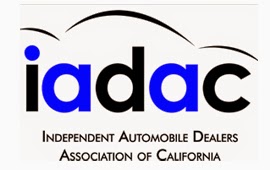
By John Wysseier, CEO and President, The CEI Group, Inc.
Panic is never a preferred business mode, yet so much has been made of the dire threat of disruption over the last few years that it may seem that’s the emotion the business and trade press have been trying to instill.
That hasn’t been my objective. Instead, what I and most of the keen-eyed observers I’ve been following have been trying to do is to persuade senior executives that they need to appreciate the dramatic ways in which digital technology is changing the face of business, and to deepen their understanding of the ever-expanding array of applications that may be used to undermine or strengthen their competitiveness.
To be sure – and as I’ve cited in recent posts – the pace of change in the business world driven by new technology is accelerating and is being reflected in the speed by which the roster of industry leaders has been changing recently and is forecast to continue. At the risk of repeating myself, the average tenure of companies listed on the Standard & Poor’s 500 Index of the largest publicly traded companies in the U.S. shrank from 33 years in 1964 to 24 by 2016 and is forecast to shrink further to just 12 years by 2027.
It’s important to realize, however, that a company or industry doesn’t become disrupted overnight. In fact, a study by two prominent business consultants revealed that the process takes years (see https://www.strategy-business.com/article/The-Fear-of-Disruption-Can-Be-More-Damaging-than-Actual-Disruption). Here’s what the authors, Paul Leinwand of PwC and Cesare Mainardi, formerly of Booz & Company and now a professor at Northwestern University’s Kellogg School of Business, reported in Strategy + Business in 2017:
“Although we have no crystal ball to predict exactly how much disruption will take place during the next five years, we have found that companies facing disruption generally have longer to respond than they expect, and an effective response is available to them.” In fact, they cite examples of the process taking 10 years or more:
“[T]he pace of disruption — the time it takes to appear and have impact — is generally much slower than the conventional wisdom may suggest, and thus easier to deal with. For example, the pharmaceuticals industry has been considerably affected by external forces, including regulatory upheavals. But these events have unfolded over the course of 10 years or more.
“In the internet software and services sector, it took nearly a decade after the invention of the Web browser in 1990 before the Google search engine made the Web practical for e-commerce. The current disruption in the retail industry, in which economic value is moving to online players such as Amazon, has been dramatic, to be sure. But even here, it has taken more than a decade to reach a tipping point.”
My take is that when a company believes it’s been disrupted by a bolt out of the blue, it’s because senior management has been overconfident and failed to connect or even perceive the dots that represented clues that their industry leadership was in jeopardy long before their customers turned away in droves. As Leinwand and Mainardi point out: “When disruption does affect a company, it’s frequently because the enterprise was already vulnerable in some fundamental way; moreover, many incumbent companies accelerate their decline through their efforts to forestall it.”
They go on to say that “[p]anic-driven efforts to avoid or combat disruption can easily lead to hasty, reactive, short-term-oriented decisions that move a company in many directions at once, distracting its management and squandering its resources. The fear of disruption can thus be worse for a company than the actual disruption itself.” And the way that happens is that companies overreact and rush into responses before they fully understand how disruption will play out in the marketplace.
An example is Kodak. As recounted in a Harvard Business Review article, in the late 1990’s, then CEO George Fisher correctly identified digital photography as a threat to Kodak’s core, analog approach. Fisher then directed the investment of $2 billion into the creation of 10,000 digital kiosks in partner stores where users could download and develop their photos. Within a few years, however, the business failed as companies that weren’t in the photography business – Hewlett-Packard, Canon and Sony – launched products that enabled customers to develop their photos more conveniently, on computers and printers in their own homes.
So how can you avoid panic in the face of prospective disruption?
Expect to be disrupted. It may not happen for years, but to anticipate in a timely way you need constantly to consider your company’s weaknesses, both in your product and services themselves and how you deliver them, and seek ways to improve them.
Stay well-informed about advances in technology, like those being heralded as key to the future of business, including Artificial intelligence, the Internet of Things, Machine Learning, Blockchain, Virtual and Augmented Reality, Robotics, Nanotechnology, and Cryptocurrency. Senior executives can’t afford to leave the understanding and applications of these only to their technology specialists. They have to know enough about them to provide their specialists with strategic leadership and support for real innovation.
Obtain deep knowledge of your customers. It’s risky to mistake a lack of customer complaints with their complete satisfaction and loyalty. Prompt customers to be candid about not only what makes them happy with you, but what they think you could be doing better and what their wishes are.
Read case studies on disruption. Knowing how other big players and industries were upended will help keep you on your toes and detect threats long before they cause deep and lasting damage. Simple search engine inquiries can easily unearth them.
Keep your eye on upstarts. Most don’t survive, but even those that don’t may have lessons for how you can improve or transform your business.
Embrace your distinctive strengths and differentiators and, instead of abandoning or siphoning energy away from them, double down on your investments in them. Leinwand and Mainardi cite how hoteliers and Marriott and Starwood dealt with competition from Airbnb, the Internet-based accommodations-by-private-owner service. They staved off damage by merging and improving their offerings, the most notable being the combination of their customer loyalty rewards programs, which brought together the best features from both to attract and retain customers.
Every industry is either undergoing or is destined to undergo disruption. To survive, senior executives need to strike a balance between overconfidence and overreaction that leads to costly, premature and inappropriate responses.
Browse previous Disruptive Leadership columns
The post The Fear of Disruption Can Be Worse than Disruption Itself appeared first on Fleet Management Weekly.
from Fleet Management Weekly https://ift.tt/2KbNw6n



Sourced by Quik DMV - CADMV fleet registration services. Renew your registration online in only 10 minutes. No DMV visits, no lines, no phone mazes, and no appointments needed. Visit Quik, Click, Pay & Print your registration from home or any local print shop.





0 comments:
Post a Comment